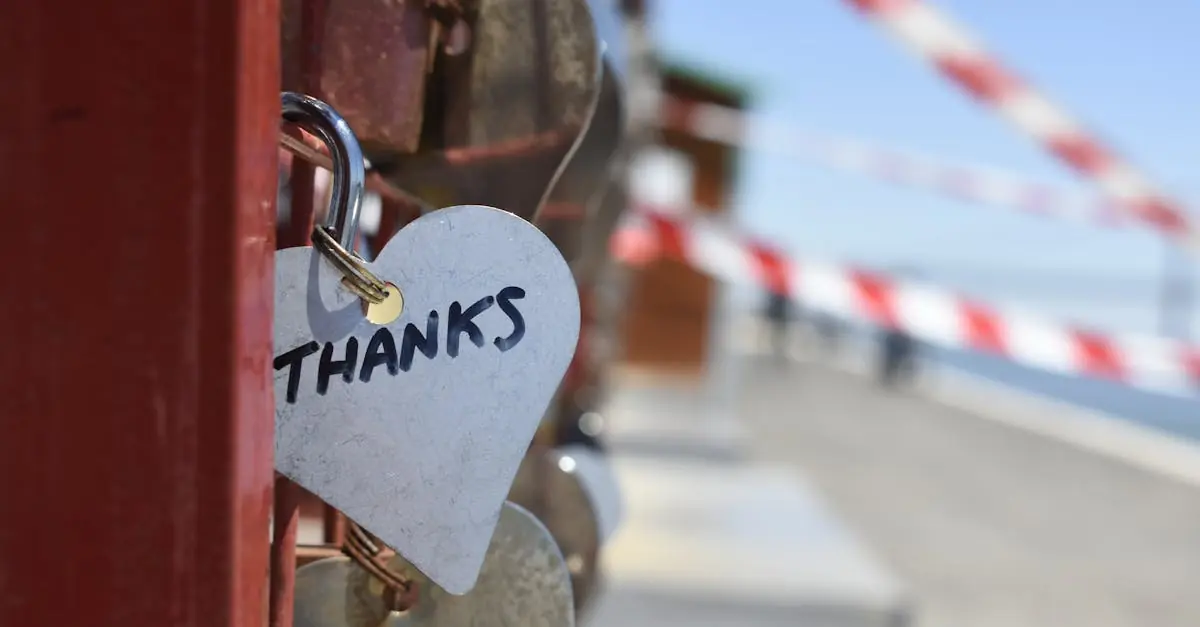Table of Contents
ToggleIn the world of electrical work, a continuity tester is like a trusty sidekick—always there to save the day when circuits go rogue. Imagine trying to troubleshoot a faulty wire without this handy tool; it’d be like searching for a light switch in the dark while wearing mittens! A continuity tester quickly checks if electricity flows through a circuit, helping to pinpoint issues faster than you can say “short circuit.”
Whether you’re a seasoned electrician or a DIY enthusiast, understanding how to use a continuity tester can make or break your project. It’s the superhero of tools that ensures everything is connected and functioning as it should. So, let’s dive into the electrifying world of continuity testers and discover why they deserve a spot in every toolbox—because who wouldn’t want to be the hero of their own electrical saga?
Overview Of Continuity Testers
Continuity testers are instruments designed to assess the electric flow within a circuit. These testers confirm whether a complete path exists for electricity, signaling operational components. Electricians and DIY enthusiasts rely heavily on this tool for diagnosing issues in wiring and components.
Various types of continuity testers exist, including basic models with a simple LED indicator, and advanced devices featuring audible signals. Each type serves distinct purposes while ensuring quick checks of electrical connections.
When using a continuity tester, the user connects the probes to either side of a circuit. An illuminated LED or a beep indicates a successful connection, while a lack of response points to a fault within the circuit. Reliability and speed make continuity testers invaluable when troubleshooting.
Incorporating this tool into regular maintenance practices can prevent larger electrical issues. Many professionals strongly recommend keeping a continuity tester in the toolbox for immediate access. Performance and accuracy characterize the best continuity testers, ensuring users receive precise readings consistently.
Specific brands, such as Fluke and Klein Tools, offer models trusted in the industry for their durability and functionality. Users can find testers ranging from $10 to $200, depending on features and capabilities. With this knowledge, selecting the right continuity tester becomes easier, aligning with individual needs and budget constraints.
Types Of Continuity Testers
Continuity testers come in various types, each designed for specific tasks. Understanding the differences helps users choose the right tool for their needs.
Digital Continuity Testers
Digital continuity testers display readings on an LCD screen. These testers offer precise measurements, allowing users to assess voltage levels alongside continuity. Features such as audible alerts enhance usability by providing immediate feedback during tests. Users often prefer digital models for their accuracy, especially when dealing with sensitive electronic components. Many digital continuity testers also include additional functions, like resistance measurement, making them versatile for various applications. Reliable brands in this category include Fluke and Extech, known for their durability and performance.
Analog Continuity Testers
Analog continuity testers use a needle on a dial to show continuity. These testers provide a simple visual representation of circuit integrity. Users may find the needle movement intuitive, especially for quick checks on basic wiring. While offering less precision than digital testers, analog versions are often more affordable. The design makes them easy to use for straightforward tasks, leading to their popularity among DIY enthusiasts. Common examples of analog continuity testers include those manufactured by Craftsman and Amprobe, valued for their ease of use and reliability in everyday applications.
How To Use A Continuity Tester
Using a continuity tester is straightforward and efficient for verifying electrical connections. Follow these steps for proper usage.
Step-By-Step Guide
- Gather the equipment: Ensure the continuity tester and the necessary tools are ready for use.
- Power off the circuit: Turn off all power to the circuit before testing to prevent electric shock.
- Connect the probes: Attach one probe to each side of the component or wire being tested.
- Observe the indicators: Notice the LED light or audible beep that indicates continuity. A lit LED or sound signals a proper connection, while no response highlights a fault.
- Document findings: Record any discrepancies for reference during repairs.
Safety Precautions
Prioritizing safety is essential when using a continuity tester. First, always check that power is off to the circuit before starting. Electric shocks can occur if proper precautions are ignored. Next, wear insulated gloves to protect against accidental contact with live wires. Additionally, use a continuity tester with insulated probes to minimize the risk of electric shock. Avoid testing connections in wet or damp areas, as moisture increases hazard risks. Finally, regularly inspect the tester’s probes for damage, ensuring they remain in good condition for accurate readings. Following these safety guidelines maintains a secure work environment while diagnosing electrical issues.
Benefits Of Using A Continuity Tester
Using a continuity tester streamlines electrical troubleshooting. The ability to quickly check for electrical flow saves time during projects. This tool identifies issues promptly, reducing the risk of more complex problems later.
Reliability defines continuity testers, making them essential for both professionals and hobbyists. Users can confirm the integrity of circuits with confidence. Accuracy ensures that readings reflect actual conditions within the electrical system.
Speed enhances efficiency when diagnosing faults. Many continuity testers provide immediate feedback through LED indicators or audible signals. Such features enable users to uncover problems in real-time, allowing for faster resolutions.
Versatility accommodates various electrical tasks. Digital models cater to sensitive components, with precise measurements displayed on LCD screens. Meanwhile, analog versions offer intuitive visual representations, making quick checks accessible for those less experienced.
Cost-effectiveness influences tool selection. Reliable brands like Fluke and Klein Tools offer options for all budget ranges, from $10 to $200. This variety empowers users to choose based on specific needs without compromising quality.
Incorporating a continuity tester into regular maintenance routines leads to fewer electrical failures. Users often report enhanced safety when circuits are routinely checked. By adopting this practice, individuals can safeguard both their projects and themselves.
Ultimately, a continuity tester significantly contributes to efficient electrical work. The right tools prevent larger issues and foster success in electrical projects. Prioritizing continuity testers in every toolbox proves beneficial for all who engage with electrical systems.
Common Applications
Continuity testers find application in various electrical scenarios, ensuring efficient troubleshooting. Electricians often use these tools to verify wiring integrity in residential and commercial settings. Identifying faulted connections becomes easier, allowing for timely repairs.
Homeowners frequently benefit from continuity testers during DIY projects. Checking holiday lights for continuity helps avoid frustration with burnt-out strings. Testing electrical appliances before use can prevent potential hazards.
Industrial settings also rely heavily on continuity testers. Maintenance teams use these devices to ensure machinery functions correctly, resulting in less downtime. Electric motor diagnostics often require continuity testing to avoid costly failures.
Technicians engage continuity testers for circuit board assessments, especially in sensitive electronic devices. Checking fuses or circuit breakers verifies that components operate as intended. Troubleshooting automotive electrical issues often involves testing wiring and connectors with these tools.
Different types of continuity testers suit particular needs. Digital testers provide precise readings for intricate tasks, making them ideal for electronic work. Analog testers serve as excellent options for quick visual checks, suitable for general home use.
Regular use of continuity testers not only simplifies electrical tasks but also enhances safety. Confidence in a circuit’s reliability reduces the likelihood of electrical mishaps. Keeping a continuity tester available promotes proactive maintenance in various settings.
Conclusion
A continuity tester is an indispensable tool for anyone working with electrical systems. Its ability to quickly identify faults and verify connections not only saves time but also enhances safety. Whether for professional electricians or DIY enthusiasts, having a continuity tester on hand can make all the difference in maintaining and troubleshooting electrical circuits. With various models available to suit different needs and budgets, investing in a quality continuity tester is a smart choice. Regular use fosters proactive maintenance and helps prevent larger electrical issues down the line, ensuring that projects run smoothly and efficiently.




